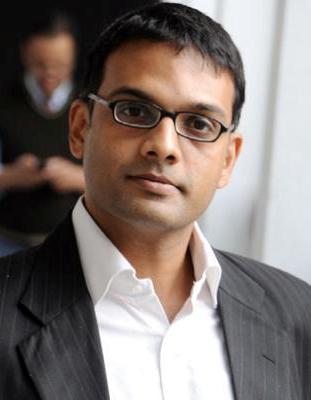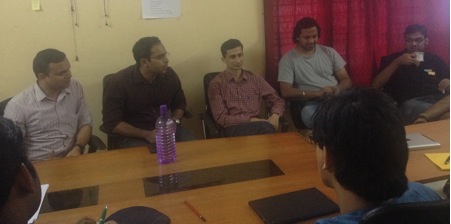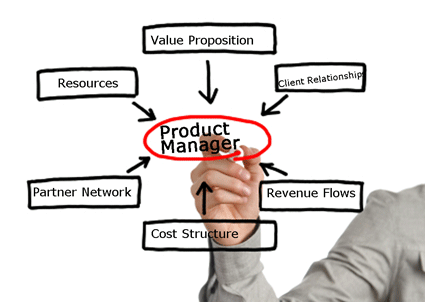Ranjit has a PhD in Computer Science from University of Southern California and is the CEO of Germin8. In this #PNHangout we had a chance to catch up with Ranjit on the challenges of building a platform and finding the initial market fit.
 Market research companies world over found conducting surveys about brands and products difficult. People were reluctant to take surveys and those who did take these surveys were not representative of the target audience, eg: housewives and retired folks instead of working professionals. We saw a trend where people would often go onto social media sites and/or company owned channels of communication such as emails to express themselves. Hence, as a solution to this market research problem we developed NLP algorithms which were capable of understanding opinions expressed in textual conversations. These algorithms were designed to perform functions such as topic segmentation, topic identification and sentiment analysis. Although these theoretical problems were interesting to solve, it was far from being a product that had much broad commercial appeal.
Market research companies world over found conducting surveys about brands and products difficult. People were reluctant to take surveys and those who did take these surveys were not representative of the target audience, eg: housewives and retired folks instead of working professionals. We saw a trend where people would often go onto social media sites and/or company owned channels of communication such as emails to express themselves. Hence, as a solution to this market research problem we developed NLP algorithms which were capable of understanding opinions expressed in textual conversations. These algorithms were designed to perform functions such as topic segmentation, topic identification and sentiment analysis. Although these theoretical problems were interesting to solve, it was far from being a product that had much broad commercial appeal.
The push to create a market fit for Explic8
By March 2009, I had assembled a team to develop a commercial product that harnesses these NLP algorithms in order to draw actionable insights and leads from public and private communications channels such as social media and emails. To fill the missing features that could make this product commercially viable, I had challenged my team to build a working prototype in 23 calendar days — just in time for the General Elections in India. Our goal was simple, to analyse what people globally were talking about politicians and parties during the election and make this data available to the public.
This sprint drew us closer to creating the foundations of a minimum viable product which solved a market research pain point (i.e. reliability of surveys). But we knew that the technology we had developed could also solve pain points felt by customer service, sales and corporate communications. For example, this tool could be used for lead generation by a sales team by finding conversations where customers had expressed a stated or latent need for certain products.
An expanded vision could mean a larger product development cycle, but it was worth it
We knew that if we expanded the product vision to solve problems beyond just market research and in multiple verticals, we were setting ourselves up to be a little unfocused; instead of narrowing the focus on one specific problem, we chose to develop a platform that could be used in different applications. We chose this approach because there was no market player who had taken the platform route and attacking the larger market would make this product more feasible. We were lucky to have the support of our investors to back us up on this decision.
We, as a product company, were a little bit ahead of the curve where we sometimes ended up with features that the Indian market wasn’t even ready for. When we launched our product, we realized a lot of the features we built weren’t actually being used by our customers. For example, we have a feature that allows our users to analyse sentiments not just at the brand level but also for each of the brand’s touch points. We realized that apart from a few brands, most were satisfied with just using the overall brand sentiment without concerning themselves about the sentiment for each of their touch points. We preserved this feature and as users evolved, this feature became one of the differentiators that is now used by most of our customers.
Hindsight is always 20/20 and as we went about from concept to production there were many ups and downs that I think are common with every start-up. We would battle between adding features that add functionality and features which made the product more useful, usable and scalable. I think if I had to do things a little differently today, I would have focussed a little more on marketing initially and a little lesser on building many features. However, we have reached a point where our product speaks for itself and customers from a variety of industries are interested in using Explic8.
Platform and Goals
We are now more than a product but a platform. Explic8 is one of the apps which reside on our platform and we’ve built it in such a way that it could be used in multiple use case scenarios such as analysing emails, chat conversations, etc. We also allow third party applications to use our API to develop their own tools. Analytics that comes from our app is very industry focused. For example, if you’re an automobile brand, then the insights you receive will be benchmarked against competitors using metrics and sources relevant to the automobile industry. Hence, the insights you get are highly actionable. The sentiment algorithm is tuned for each industry, for instance “unpredictable” in the context of a steering mechanism would be treated differently from “unpredictable” in the context of a movie plot. We are also in the midst of expanding our platform to encompass predictive analytics.
If you have any feedback or questions that you would like answered in this series feel free to tweet to me: @akashj












